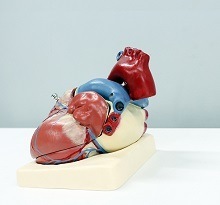 Doctors at St David’s Medical Center in Austin, USA recently implanted a new neurostimulator technology in patients to help treat advanced heart failure—and are among the first physicians in the USA to do so, according to a press release.
Doctors at St David’s Medical Center in Austin, USA recently implanted a new neurostimulator technology in patients to help treat advanced heart failure—and are among the first physicians in the USA to do so, according to a press release.
The technology in question was the Barostim system (CVRx), which is the only technology approved by the US Food and Drug Administration (FDA) to use the nervous system to control heart failure and improve the function of the cardiovascular system, the St David’s Medical Center release states.
It features a programmable device that is placed under the patient’s collarbone and sends electrical pulses to baroreceptors, which detect changes in pressure in the carotid artery. This triggers the baroreflex—the body’s main cardiovascular reflex—causing an autonomic, or involuntary, response to the heart.
“When the device is activated, it sends impulses through an electrode to the receptors in the carotid artery,” said vascular surgeon Jeffrey Apple (St David’s Medical Center, Austin, USA), who performed the implantation procedure. “This tricks the body into thinking that the sympathetic and parasympathetic nervous systems are working correctly. The brain then responds and sends messages to the body that the heart is working properly. This relaxes the blood vessels, slows the heart rate and reduces fluid in the body.”
The therapy is designed to restore balance to the autonomic nervous system and thereby reduce the symptoms of heart failure, the release adds.
“This approach to heart failure is designed to improve patients’ quality of life, including those who remain symptomatic despite taking medications and have no other device-based therapy options,” added cardiac electrophysiologist Andrea Natale (St David’s Medical Center, Austin, USA). “It allows them to live their everyday lives with fewer limitations.”









